The dusty heart of an active galaxy
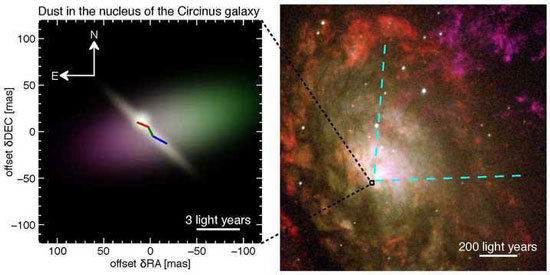 Astronomers observe a dense disk and a bright funnel at the centre of the Circinus galaxy.
Astronomers observe a dense disk and a bright funnel at the centre of the Circinus galaxy.
Mar 13th, 2014
Read more
 Subscribe to our Space Exploration News feed
Subscribe to our Space Exploration News feed
 Astronomers observe a dense disk and a bright funnel at the centre of the Circinus galaxy.
Astronomers observe a dense disk and a bright funnel at the centre of the Circinus galaxy.
Mar 13th, 2014
Read more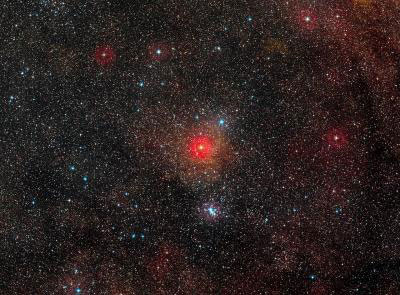 ESO's Very Large Telescope has revealed the largest yellow star - and one of the 10 largest stars found so far. This hypergiant has been found to measure more than 1,300 times the diameter of the Sun, and to be part of a double star system, with the second component so close that it is in contact with the main star. Observations spanning over 60 years also indicate that this remarkable object is changing very rapidly.
ESO's Very Large Telescope has revealed the largest yellow star - and one of the 10 largest stars found so far. This hypergiant has been found to measure more than 1,300 times the diameter of the Sun, and to be part of a double star system, with the second component so close that it is in contact with the main star. Observations spanning over 60 years also indicate that this remarkable object is changing very rapidly.
Mar 12th, 2014
Read moreIn near future, in outer space, Chinese scientists and their international colleagues, perhaps in the company of robots, will seek knowledge in labs on China's future space station.
Mar 11th, 2014
Read moreMost of the galaxies that have been observed from the early days of the universe were young and actively forming stars. Now, an international team of astronomers have discovered galaxies that were already mature and massive in the early days. Fifteen mature galaxies were found at a record-breaking average distance of 12 billion light years, when the universe was just 1.6 billion years old. Their existence at such an early time raises new questions about what forced them to grow up so quickly.
Mar 11th, 2014
Read more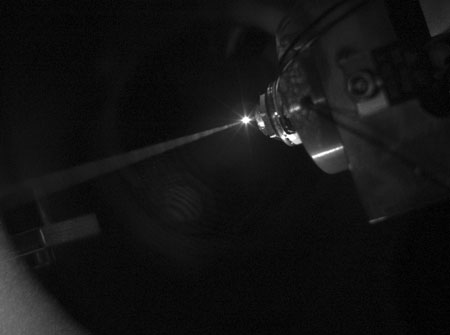 Using DESY's X-ray laser FLASH, researchers took a sneak peek deep into the lower atmospheric layers of giant gas planets such as Jupiter or Saturn. The observations reveal how liquid hydrogen becomes a plasma, providing information on the material's thermal conductivity and its internal energy exchange - important ingredients for planetary models.
Using DESY's X-ray laser FLASH, researchers took a sneak peek deep into the lower atmospheric layers of giant gas planets such as Jupiter or Saturn. The observations reveal how liquid hydrogen becomes a plasma, providing information on the material's thermal conductivity and its internal energy exchange - important ingredients for planetary models.
Mar 11th, 2014
Read more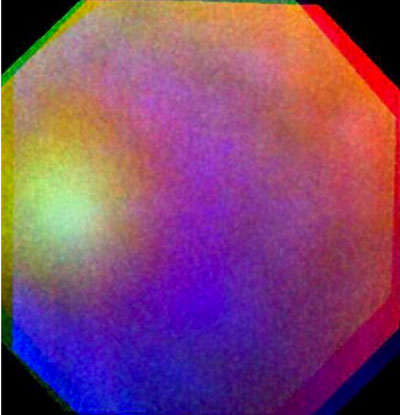 A rainbow-like light phenomenon observed on Venus cloud tops helps to identify the components of the planet's acidic cloud cover.
A rainbow-like light phenomenon observed on Venus cloud tops helps to identify the components of the planet's acidic cloud cover.
Mar 11th, 2014
Read more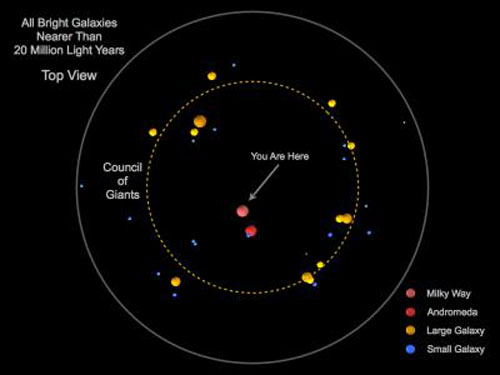 A new paper maps out bright galaxies within 35-million light-years of the Earth, offering up an expanded picture of what lies beyond our doorstep.
A new paper maps out bright galaxies within 35-million light-years of the Earth, offering up an expanded picture of what lies beyond our doorstep.
Mar 11th, 2014
Read moreThe Planetary Data System (PDS), which archives and distributes data from all of NASA's planetary missions, today released its eleventh batch of data collected by the MESSENGER mission. With this release, images and measurements are now available to the public for the fifth full Mercury solar day of MESSENGER orbital operations.
Mar 10th, 2014
Read more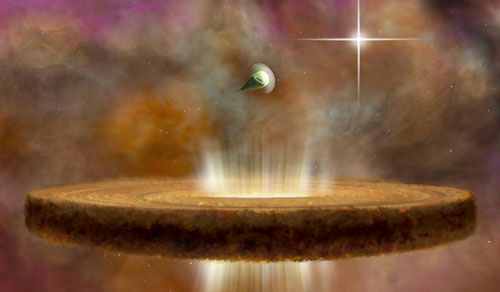 The Orion Nebula is home to hundreds of young stars and even younger protostars known as proplyds. Many of these nascent systems will go on to develop planets, while others will have their planet-forming dust and gas blasted away by the fierce ultraviolet radiation emitted by massive O-type stars that lurk nearby.
The Orion Nebula is home to hundreds of young stars and even younger protostars known as proplyds. Many of these nascent systems will go on to develop planets, while others will have their planet-forming dust and gas blasted away by the fierce ultraviolet radiation emitted by massive O-type stars that lurk nearby.
Mar 10th, 2014
Read more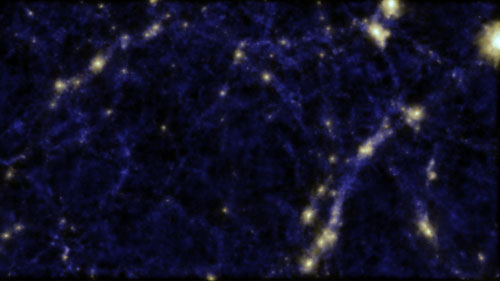 Australian astronomers have shown galaxies in the vast empty regions of the Universe are actually aligned into delicate strings.
Australian astronomers have shown galaxies in the vast empty regions of the Universe are actually aligned into delicate strings.
Mar 10th, 2014
Read moreNASA's Asteroid Data Hunter contest series will offer $35,000 in awards over the next six months to citizen scientists who develop improved algorithms that can be used to identify asteroids.
Mar 10th, 2014
Read more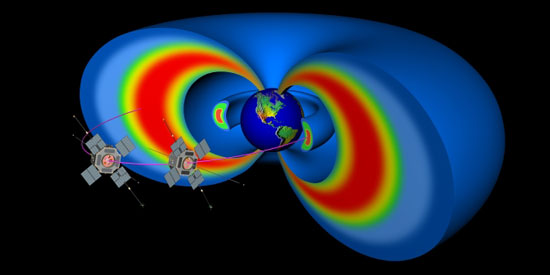 Using data from NASA's Van Allen Probes, researchers have tested and improved a model to help forecast what's happening in the radiation environment of near-Earth space -- a place seething with fast-moving particles and a space weather system that varies in response to incoming energy and particles from the sun.
Using data from NASA's Van Allen Probes, researchers have tested and improved a model to help forecast what's happening in the radiation environment of near-Earth space -- a place seething with fast-moving particles and a space weather system that varies in response to incoming energy and particles from the sun.
Mar 9th, 2014
Read moreAfter searching hundreds of millions of objects across our sky, NASA's Wide-Field Infrared Survey Explorer (WISE) has turned up no evidence of the hypothesized celestial body in our solar system commonly dubbed 'Planet X'
Mar 7th, 2014
Read more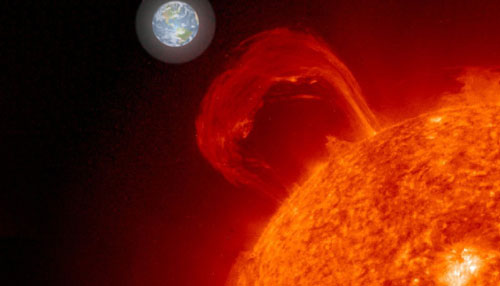 Scientists identify a plasma plume that naturally protects the Earth against solar storms.
Scientists identify a plasma plume that naturally protects the Earth against solar storms.
Mar 7th, 2014
Read more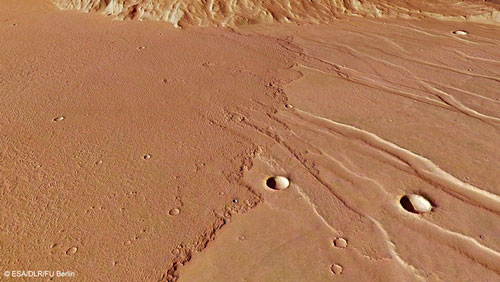 Two distinct volcanic eruptions have flooded this area of Daedalia Planum with lava, flowing around an elevated fragment of ancient terrain.
Two distinct volcanic eruptions have flooded this area of Daedalia Planum with lava, flowing around an elevated fragment of ancient terrain.
Mar 6th, 2014
Read more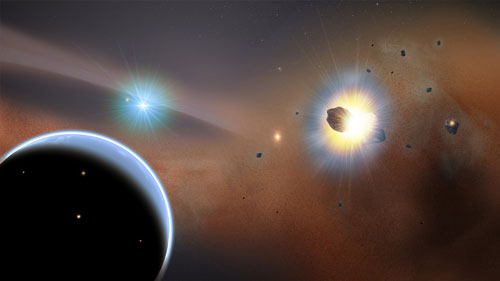 Astronomers using the Atacama Large Millimeter/submillimeter Array (ALMA) telescope have discovered the splattered remains of comets colliding together around a nearby star; the researchers believe they are witnessing the total destruction of one of these icy bodies once every five minutes.
Astronomers using the Atacama Large Millimeter/submillimeter Array (ALMA) telescope have discovered the splattered remains of comets colliding together around a nearby star; the researchers believe they are witnessing the total destruction of one of these icy bodies once every five minutes.
Mar 6th, 2014
Read more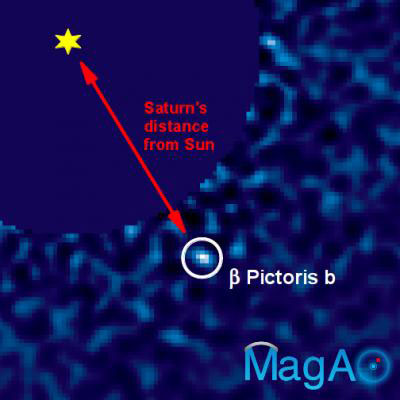 For the first time, astronomers have used the same imaging technology found in a digital camera to take a picture of a planet far from our solar system with an Earth-based telescope. The accomplishment is a small step toward the technology astronomers will need in order to characterize planets suitable for harboring life.
For the first time, astronomers have used the same imaging technology found in a digital camera to take a picture of a planet far from our solar system with an Earth-based telescope. The accomplishment is a small step toward the technology astronomers will need in order to characterize planets suitable for harboring life.
Mar 6th, 2014
Read more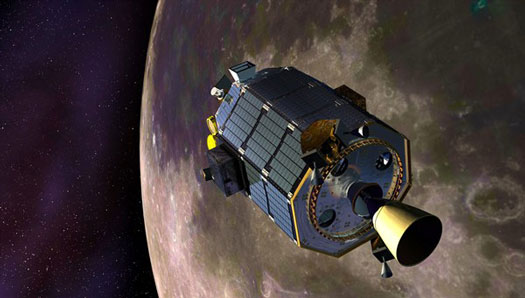 The signal was transmitted by the Lunar Lasercom Space Terminal (LLST) on board the NASA spacecraft Lunar Atmosphere and Dust Environment Explorer (LADEE), which has been orbiting the Moon since October 2013. This is the first time that an optical link has been analysed after a long passage through space.
The signal was transmitted by the Lunar Lasercom Space Terminal (LLST) on board the NASA spacecraft Lunar Atmosphere and Dust Environment Explorer (LADEE), which has been orbiting the Moon since October 2013. This is the first time that an optical link has been analysed after a long passage through space.
Mar 6th, 2014
Read more